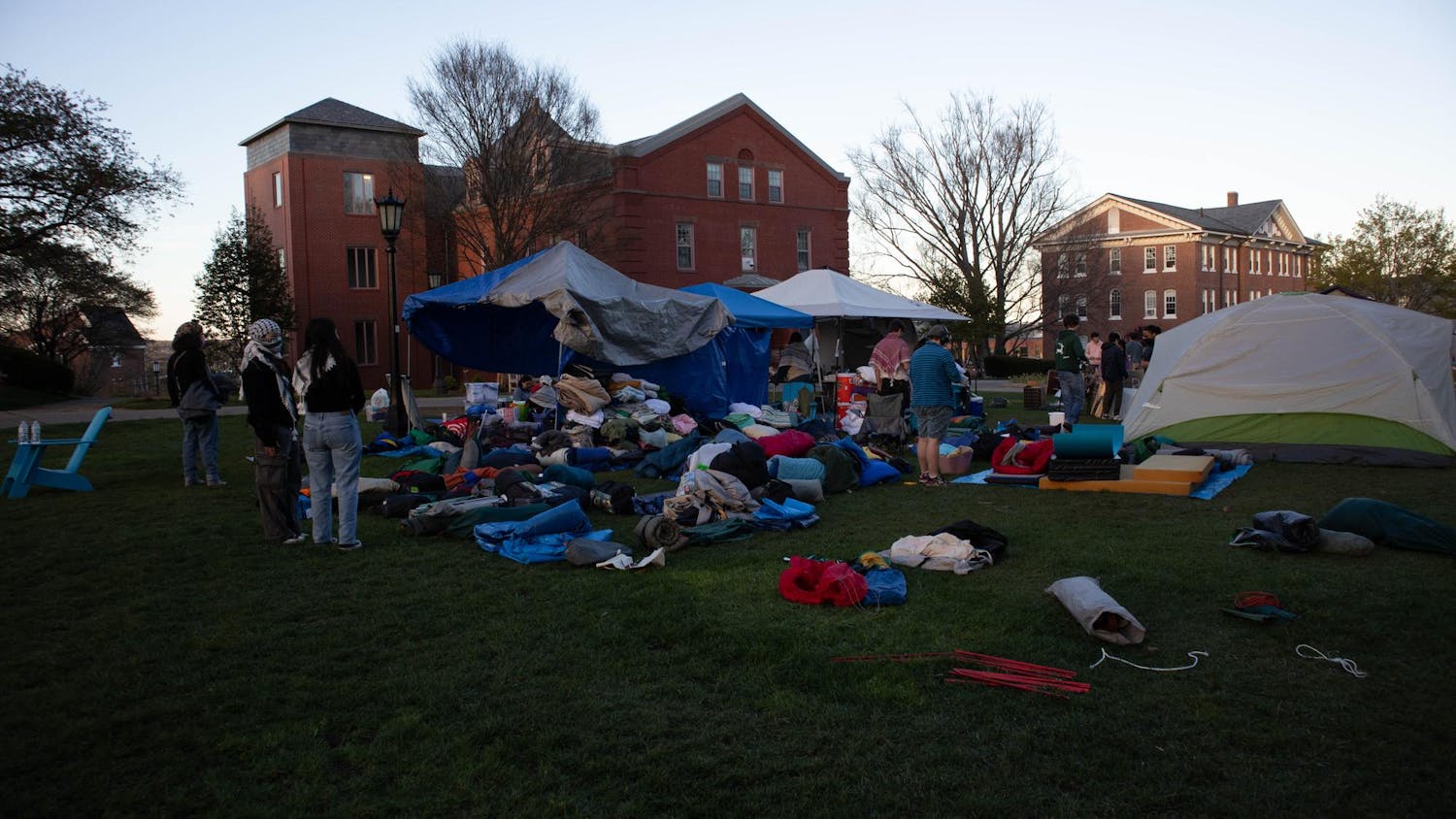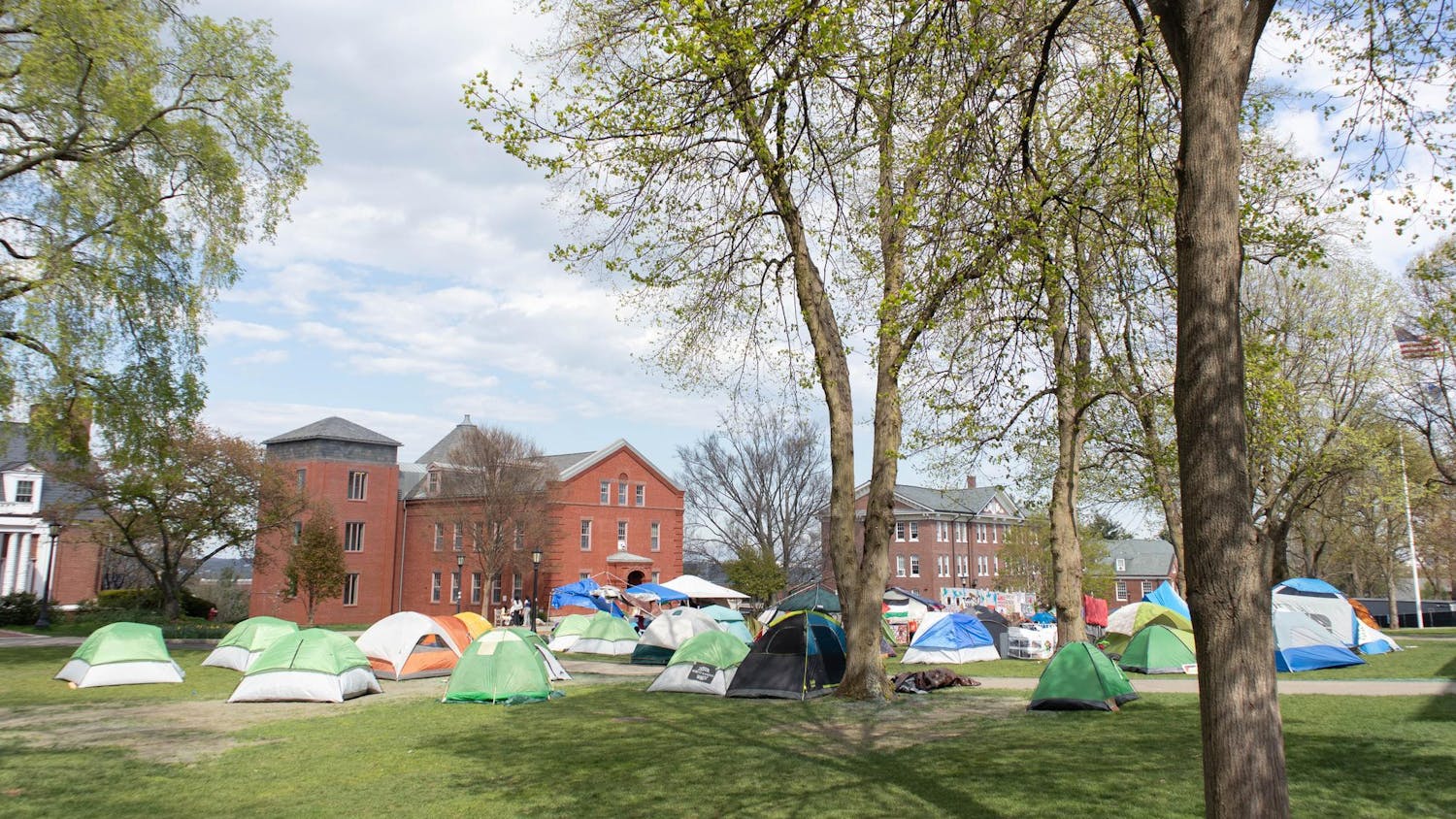This article is the second in a two-part series chronicling the expansion of the local food movement both on a community-wide scale and among Tufts students. Yesterday's installation focused on the Davis Square farmers' market and the efforts of students who promote locally grown food. This piece will address local food in Tufts' dining halls and eateries, as well as the barriers to expanding its presence on campus.
While a cluster of Tufts students chart perfect attendance at the weekly Davis Square farmers' market and strive to tout local food on campus, most Jumbos tend to log their dining miles in Dewick and Carmichael, where telltale signs of the local food movement are sparse.
"I think we are a school known for initiatives in environmental arenas. We have a lot of faculty from the environmental sciences, and sustainability is a major concern," said Kathleen Merrigan, the director of the Agriculture, Food and Environment Program at the Friedman School of Nutrition Science and Policy. "I would like to see an expansion of this effort because I think it coincides with the articulated mission of the university."
In her article "The Potential of Farm-to-College Programs," published in the July/August issue of Nutrition Today, Merrigan turned her attention to examining the plausibility of providing more local food in Tufts' dining halls.
Dining Services has made an effort to provide a variety of local food through collaborative efforts with students and the Tufts Institute of the Environment (TIE). Food Education and Action for Sustainability at Tufts, or FEAST, provides a stage for this communication, which has yielded a modest influx of local apples, squash and fair trade coffee into Tufts' eateries.
"It started in the '90s with two grad students recommending that we purchase some organic produce," said Julie Lampie, the nutrition marketing specialist at Dining Services. "It started very small, but we have been purchasing local apples since then."
Still, only two percent, or about $85,000, of Tufts' food purchasing budget is currently delegated toward the purchase of local produce, a dismal fraction resulting from barriers Merrigan mentions in her article, including seasonal availability, the need to buy in bulk and an overall lack of student support.
"The biggest challenge is trying to get students interested in it," Merrigan said. "[A small group] is not enough of the tail to wag the dog. It takes a lot of effort, more money and more time. They need consumer demand to make it happen."
Senior Tai Dinnan, a member of FEAST who grew up in Vermont frequenting apple orchards and gardening with her family, said that the extent to which the local food is consumed in the dining halls acts as a purchasing signal for Dining Services.
"I think it's really important to ‘choose with your fork,' because … if students are demanding something, Dining Services wants to meet that demand," Dinnan said. "If they see that all of the local food is disappearing really quickly, then they will respond to that."
Choosing with one's fork, though, does not appear to be the main concern of most students, oftentimes witnessed hastily piling heaps of General Gau's chicken onto their plate minutes before class.
"I would say that [of the] students that are using the dining halls, a lot of them have been really receptive, but there haven't been a lot of people ecstatic about it," Dinnan said. "It hasn't been a widespread topic of conversation amongst the suggestion cards in the dining halls."
One student, though, disagrees, and said that he feels many Tufts students would be willing to jump on the local food bandwagon if prompted.
"I definitely think that students would be enthusiastic because most people at Tufts are pretty aware of the arguments for buying locally, like reducing energy consumption," junior Sam Perrone said.
Perrone said that he has noticed the local apples in the dining halls and would like to see other options.
"Apples are pretty basic and not something I really was excited to see," Perrone said. "I think I would feel differently if they were getting eggs from a farm down the street."
According to Ann Rappaport, a lecturer in the urban and environmental policy and planning department, student initiatives have currently failed to mobilize the community, in part due to the food choices available on meal plans.
"For the folks that are eating in the dining halls, it's indirect," Rappaport said. "When you are in a dining hall, you have all of these choices, and when something says local, you are like, ‘So what? I am going to eat this instead.'"
Efforts of the small battalion of local foodies on campus have had an impact most recently on Dining Services' Harvest Food Festival. This year, Tufts' Environmental Consciousness Outreach (ECO) invited students to shuck local corn in the dining hall during the September event in order to make the corn feasible for purchase.
Dinnan, who helped head the project, said that the idea was taken from her work with Groundwork Somerville, a local organization promoting sustainable community development.
"In elementary schools, we were having students shuck the corn [in the] morning, and then it was served in their school lunches for their Harvest Festival in Somerville, and I asked Dining Services if they thought we could do that with college students," Dinnan said.
With Dining Services donating 25 cents for every ear of corn shucked by students to Groundwork Somerville, the endeavor worked both to benefit the community and make it feasible to provide another source of local food at Tufts.
"It was all sort of a collaboration across campus to increase awareness about local food and where your food comes from," Dinnan said.
Assistance from the likes of ECO and FEAST have been crucial in propelling the on-campus movement forward, but Lampie explained that location and time sensitivity are factors preventing unbridled growth.
"The total days you can actually purchase local food is so small compared to the time spent at school," Lampie said. "Some schools are doing a really great job, but where are they located? Many are located in California, where there are many growing areas nearby. It's a challenge for us."
When asked if she thought Tufts would follow in step with institutions like Yale University, where one dining hall has been crowned an all-organic, exclusively local haven sourced in part by an on-campus vegetable farm, Lampie further emphasized students' desires in making the possibility unlikely.
"Our dining halls offer so much; I don't think students would be happy not having bananas, cantaloupe, pineapple and honeydew for Sunday brunch. It would make for a very limited menu," Lampie said. "Instead of having ten entrees to choose from, you would have two, so we would be going back to where we were years ago, but things would only be served if they were seasonal."
Another student, senior Stephanie St. Thomas, said that while she occasionally attends the local farmers' market in Davis Square, she feels that the desire for local products at the dining hall depends on each student's particular history.
"I think that what people are aware of coming into college affects them," St. Thomas said. "I think if the food was all very similar and it were advertised, I would pick local over other options."





